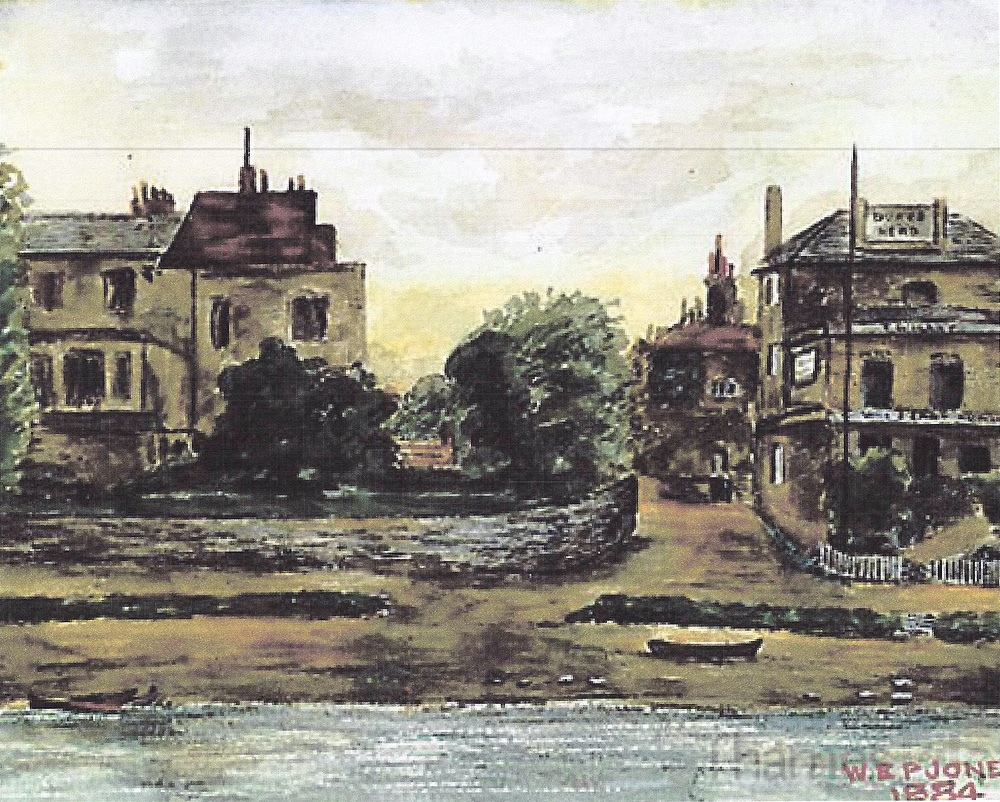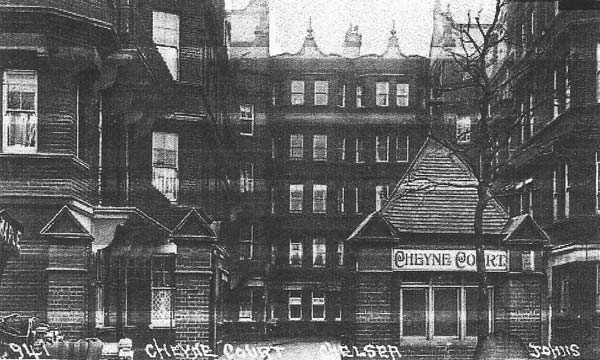History
Cheyne Court and Rossetti Garden Mansions were built around 1889/1890.
Radnor House, the home of the Earls of Radnor, originally occupied the area which now houses Cheyne Court. The Earl of Radnor died in 1685 and his widow married Charles, Lord Cheyne, Lord of Chelsea Manor. They lived at Radnor House until 1698 when Charles Cheyne died. His son William Cheyne inherited the land and commenced setting out building plots for sale in order that the commercial value of the land could be realised.
The site of Rossetti Garden Mansions was named Great Gardens in 1685.
The blocks were in the main, built over the houses and gardens which had been located in Queen Street (now Flood Street) and Queens Road West (now Royal Hospital Road).
Rossetti Garden Mansions is named so after the painter Dante Gabriel Rossetti who had lived in Cheyne Walk along with a menagerie of inmates that included a white bull, armadillos, a kangaroo, a wombat and some peacocks.
Flood Street was named after Luke Thomas Flood who lived in Cheyne Row and left £3,000 to the parish in 1860 for charitable uses.
Surrounding the Cheyne Court site prior to the building of the mansion blocks were Paradise Row, later named Queens Road West and now Royal Hospital Road, Queen Street which was renamed Flood Street, and Paradise Street which we now know as Christchurch Street. Robinson Street has not changed its name and is still in existance today. St Loo Avenue was not created until after Rossetti Garden Mansions was built.
Houses and cottages were built on the site of the original manor house along Queen Street, (earlier called Pound Lane because of the Village Pound which was located at the end of the lane at the waterside). These houses and cottages can be seen on Ordnance Survey maps dated 1865.
St Loo Avenue was named after the redoubtable Lady St Loo, better known as Bess of Hardwick (1518-1608). She was Countess of Shrewsbury and her husband owned Shrewsbury House in Cheyne Walk. When her husband, the 6th Earl of Shrewsbury died in 1590 her inheritance added to the estates of her previous three husbands, and the family seat of Hardwick Hall, made her the wealthiest woman in England next to Queen Elizabeth.
Through the middle of what was to become the Cheyne Court site ran a small cul de sac called George Place which contained 11 cottages. In 1886 Henry John Wright, a builder, obtained permission to widen Queen Street (now Flood Street) and Queens Road West (now Royal Hospital Road) by demolishing the cottages and blocking off George Place.

The painting above shows the corner of Queen Streeet (now Flood Street) and the public house called The Dukes Head. This was located very approximately where we now have 31-40 Cheyne Court.
The Landlord of this public house in 1856 was a Frederick Matthews. William Goss is shown to be the Landlord in the Post Office Directory of 1869 and again on the census of 1881 along with his wife Elizabeth, two daughters named Emily and Louisa, and a son also named William Goss as well as a grandson, Ernest Tyler and a general servant Mary Thompson.
Following the building of the embankment which began in 1873, the Thames was narrowed considerably and the shoreline became much further away from the natural shoreline which had previously been very close to the end of what we now know as Flood Street.
The following pictures were taken around the beginning of the 20th century.
Below is a photograph of the original Cheyne Court Lodge. Although it is not very clear, there is a Maples furniture delivery lorry in the foreground. We are not sure why the roof was changed from the original pitched to a flat roof, but this may have been as a result of bombing during the second World War.




